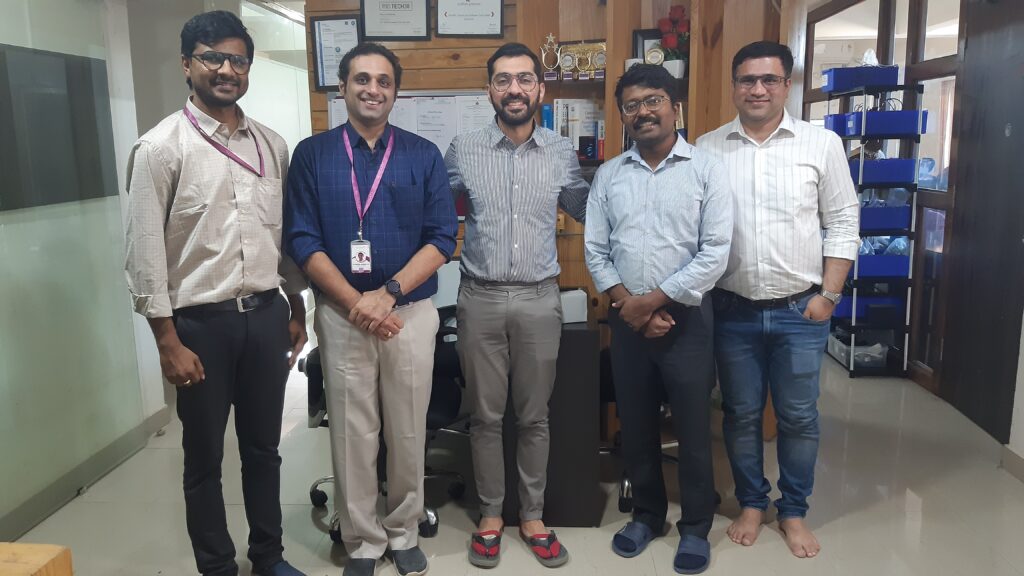Dr. Keshav Malhotra MBBS. MCE holds a Masters’s degree in Clinical Embryology from Monash university Australia and is one of the few ESHRE-certified Clinical Embryologists from INDIA. He is the Lab Director of Rainbow IVF and now the Director of Malhotra Embryology Training Academy. Dr. Malhotra is the Co-chair of SIG Embryology for ASPIRE (Asia Pacific Initiative on Reproduction), and he is also on the executive board of ISAR(Indian Society of Assisted Reproduction) and ISPAT(Indian Society for Prenatal Diagnosis and Therapy). He has worked on Key projects pertaining to Embryology in India like the Occupational Standard for Embryologists (Healthcare Sector Skill Council India-2018) and the ISAR – Embryology Consensus 2019. He was recognized as Budding Embryologist of the Year by Economic Times INDIA -2019.
SpOvum® got an opportunity to present its product portfolio to Dr. Keshav Malhotra, who visited SpOvum on 16th Dec 2022. He was fascinated by the RoboICSI workbench especially the one-click sperm immobilization feature of the RoboICSI workbench. Dr. Keshav was really excited when he tried out using the button-based controller and the one-click immobilization feature by himself.

Dr. Keshav appreciated the stiffness estimation experiments on mouse embryos and the vision of applying the observations and their insights in the embryo monitoring system using the AI and ML of SpOvum.
He had some wonderful questions and a few good suggestions and was appreciative of SpOvum’s initiative in bringing innovations to the A.R.T. space through Robotics, Automation, and AI.

One-click immobilization feature of the RoboICSI workbench displayed on the screen
